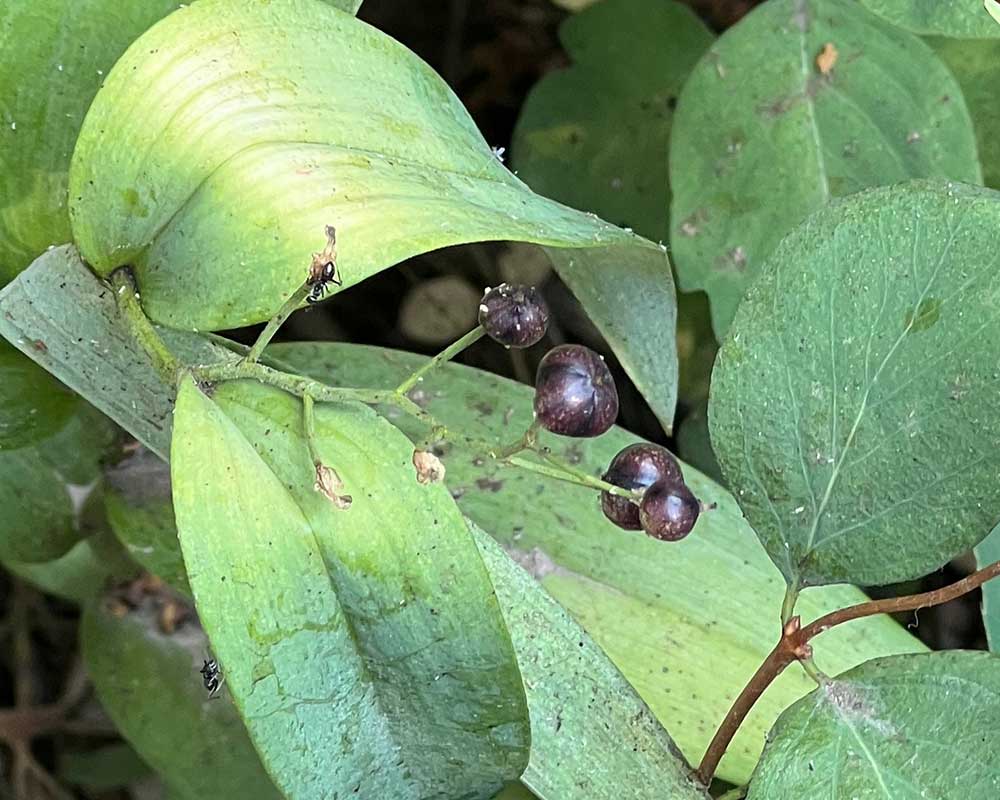Maianthemum stellatum / starry false Solomon’s seal
- blooms in late June (ish) in the Valley, mildly fragrant.
- teeny star-shaped flowers with 6 white tepals
- one inflorescence (raceme) per stem
- small berries progressing from green to purple to red with maturity
- alternate, long and narrow leaves clasping the stem
Synonym: Smilacina stellata
Also known as: false Solomon’s seal; star-flowered lily-of-the-valley, starry false lily of the valley
See also: Maianthemum racemosum / Solomon’s plume
Look for M. stellatum along ditches and other moist (but not so wet) or even slightly dry conditions. It may also be along forest roads or in openings. It stands out in the spring for its white flowers and after that for its purple, then red, berries.
The flowers bloom for only a short period in the late spring, i.e. late June in the Valley, and have a mild fragrance. The inflorescence is a raceme, but the pedicels (stems) are only short. There is only one inflorescence per stem and the flowers are tiny stars, ca. 1/3″ across. The showy bits of the flowers are 6 narrow tepals, with 6 long (relative to the flowers) stamens.
After flowering, small (1/4″) berries appear, green at first with purple-ish stripes, then maturing to a bright red.
The stems usually lean somewhat to the side, rather than standing straight up, and they zig-zag a bit. The leaves are alternate, long and narrow (6″x2″-ish) but rounded, with parallel veins and smooth edges. They clasp the stem. M. stellatum grows from stout rhizomes, and hence often appears in colonies.
This is another one of those plants that have been moved from one family (in this case, Liliaceae) to another (Asparagaceae, or the Ruscaceae, depending on your source), changing genus and species names in the process.
| Color | |
|---|---|
| Family | |
| Blossom size | |
| Inflorescence size | |
| Inflorescence type | |
| When? | |
| Where? |


